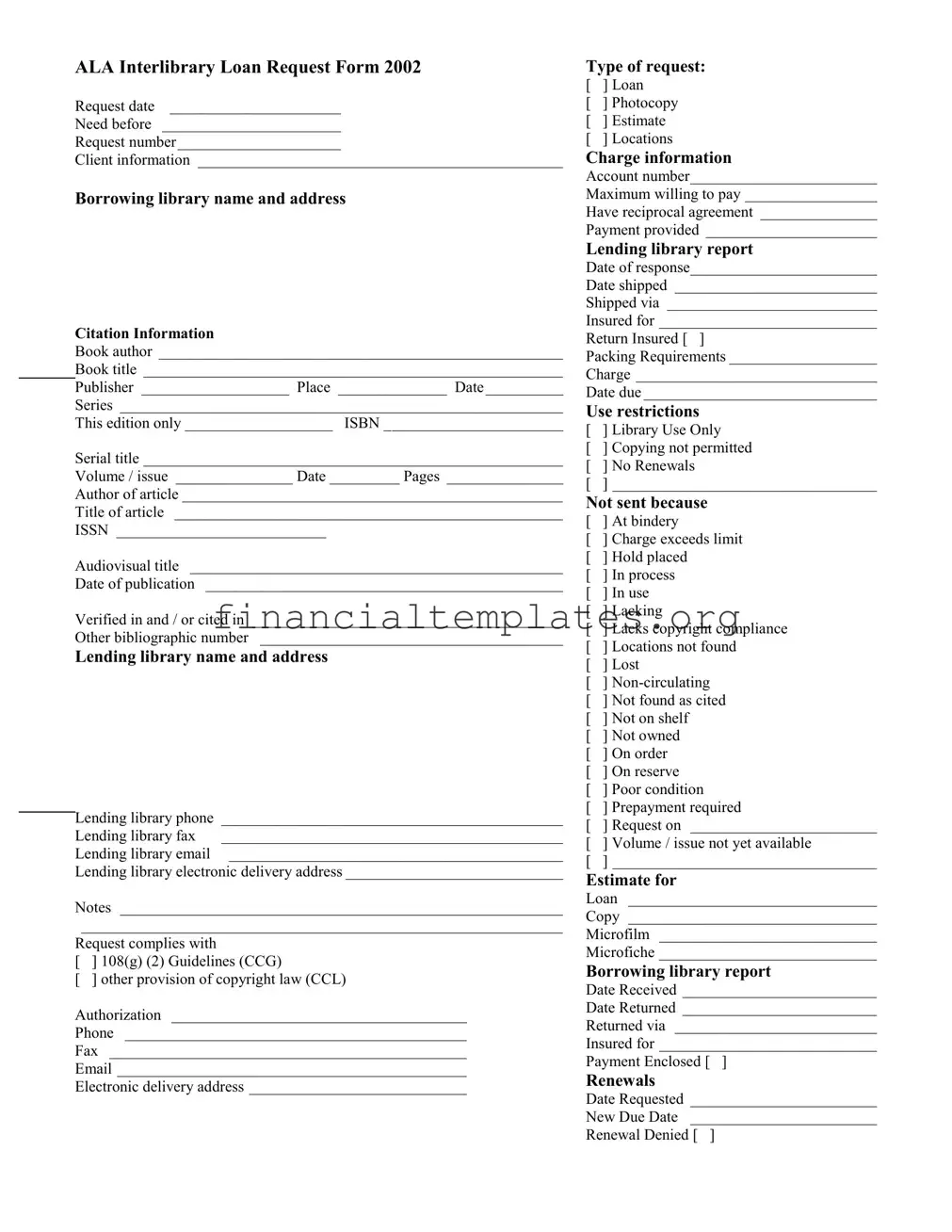ALA Interlibrary Loan Request Form 2002
Request date ______________________
Need before _______________________
Request number_____________________
Client information _______________________________________________
Borrowing library name and address
Citation Information
Book author ____________________________________________________
Book title ______________________________________________________
Publisher ___________________ Place ______________ Date__________
Series _________________________________________________________
This edition only ___________________ ISBN _______________________
Serial title ______________________________________________________
Volume / issue _______________ Date _________ Pages _______________
Author of article _________________________________________________
Title of article __________________________________________________
ISSN ___________________________
Audiovisual title ________________________________________________
Date of publication ______________________________________________
Verified in and / or cited in ________________________________________
Other bibliographic number _______________________________________
Lending library name and address
|
Lending library phone |
____________________________________________ |
|
Lending library fax |
____________________________________________ |
|
Lending library email |
___________________________________________ |
Lending library electronic delivery address ____________________________
Notes _________________________________________________________
______________________________________________________________
Request complies with
[ ] 108(g) (2) Guidelines (CCG)
[ ] other provision of copyright law (CCL)
Authorization ______________________________________
Phone ____________________________________________
Fax ______________________________________________
Email _____________________________________________
Electronic delivery address ____________________________
Type of request:
[ ] Loan
[] Photocopy
[] Estimate
[] Locations
Charge information
Account number________________________
Maximum willing to pay _________________
Have reciprocal agreement _______________
Payment provided ______________________
Lending library report
Date of response________________________
Date shipped __________________________
Shipped via ___________________________
Insured for ____________________________
Return Insured [ ]
Packing Requirements ___________________
Charge _______________________________
Date due ______________________________
Use restrictions
[] Library Use Only
[] Copying not permitted
[] No Renewals
[] __________________________________
Not sent because
[] At bindery
[] Charge exceeds limit
[] Hold placed
[] In process
[] In use
[] Lacking
[] Lacks copyright compliance
[] Locations not found
[] Lost
[] Non-circulating
[] Not found as cited
[] Not on shelf
[] Not owned
[] On order
[] On reserve
[] Poor condition
[] Prepayment required
[] Request on ________________________
[] Volume / issue not yet available
[] __________________________________
Estimate for
Loan ________________________________
Copy ________________________________
Microfilm ____________________________
Microfiche ____________________________
Borrowing library report
Date Received _________________________
Date Returned _________________________
Returned via __________________________
Insured for ____________________________
Payment Enclosed [ ]
Renewals
Date Requested ________________________
New Due Date ________________________
Renewal Denied [ ]

